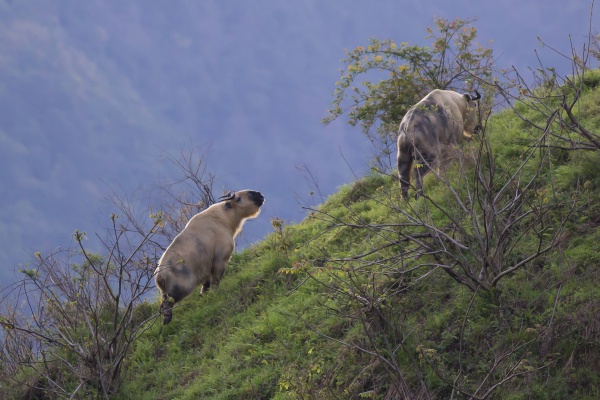Facts About Takin
The takin, often referred to as the cattle chamois or gnu goat, is a remarkable large ungulate species native to the eastern Himalayas. This intriguing animal belongs to the Caprinae subfamily and is divided into four subspecies: the Mishmi takin, golden takin, Tibetan takin, and Bhutan takin. Although earlier classifications grouped them with muskoxen, recent studies show that takins are more closely related to sheep. Notably, the takin holds the esteemed title of Bhutan’s national animal.
In terms of appearance, the takin bears a striking resemblance to the muskox, featuring a robust body, deep chest, and a long, arched nose. They also possess stout horns that make them distinctive. The color of their coat varies significantly among the subspecies, with shades ranging from dark blackish to reddish-brown to golden or creamy-white. One unique feature of the takin is the oily secretion that covers their bodies, giving them a slightly swollen appearance and a distinctive odor.
Takins thrive in diverse environments, from forested valleys to alpine zones, typically inhabiting altitudes between 1,000 and 4,500 meters above sea level. They usually live in small family groups and have a diet consisting of leaves, grasses, bamboo shoots, and flowers. During winter, takins migrate to lower, forested areas and are often found basking in sunny spots.
However, takins face threats from several natural predators, including Asiatic black bears, leopards, tigers, wolves, snow leopards, and dholes. Humans also pose a significant risk due to overhunting and habitat destruction. Consequently, takins are classified as Endangered in China and Vulnerable by the IUCN.
Conservation efforts for takins include captive breeding programs in zoos and wildlife reserves. Despite these measures, takins continue to face challenges from human activities and the illegal wildlife trade, particularly for their horns. Protecting these unique animals requires ongoing dedication and effort.

 Myanmar (Burma)
Myanmar (Burma)